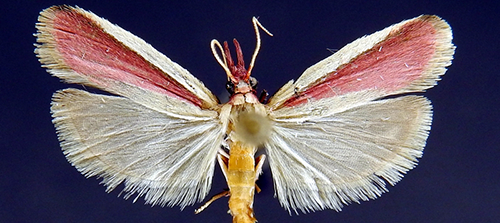Illinois Cicadas
2024 is a very special year for cicadas in Illinois. This is the first time in 221 years that both 13 year periodical cicadas and 17 year periodical cicadas will emerge. Yes, the last time this happened, Thomas Jefferson was President of the United States. Abraham Lincoln had not yet been born.
Expect a large number of cicadas in late April and early May, 2024 – brood XIII (the 17 year species) in northern and central Illinois; brood XIX (the 13 year species) in central and southern Illinois. Actually brood XIX will emerge in 15 states in the central and south eastern states. Estimates of up to 1 trillion cicadas will emerge in Illinois and nearby states. Marlatt (1923) was person who came up with brood number scheme.
These are periodical cicadas (spending most of their lives underground as nymphs). There are 4 species of 13 year cicadas and 3 species of 17 year cicadas. Illinois has roughly 20 species of cicadas (7 of which are periodical). Many others appear every year. North America has roughly 170 species in total.
Yes, they will make a lot of noise (male mating calls). If there are a lot, it may exceed 90 decibels if you are close by. They feed on plant sap. Not aggressive, just noisy. They don’t bite or sting. They are not poisonous. Don’t spray (waste of your money) as adults will be gone in 4-6 weeks.
Male cicadas make noise by vibrating a membrane called a tymbal. Males and females also make noise by flicking their wings.
Females will cut incisions in plants to place their eggs. This may cause the tips of tree branches to wither afterwards. Does not appear to harm the trees long term. Likely acts like pruning and encourages future growth. If you are concerned about young trees, cover them with garden netting. But you might wait until you confirm they are actually in your locale.
They are not locusts. That is a name for certain kinds of grasshoppers (entirely different group of insects). They do not swarm or invade an area. They live underground most of their lives. We are fortunate to experience them. This year marks the first time in 221 years that both 13 and 17 year broods emerge together. Thomas Jefferson was our president (1803) when this last happened (and Illinois was on the extreme frontier at that time). Abraham Lincoln was not yet born either.
They aerate the soil while nymphs are tunneling. Likely influence soil ecology and tree growth. Adults emerge at such infrequent intervals, they only serve as a large local food source infrequently. Why so many at once? Predator satiation. First cicadas to emerge are readily eaten by predators (birds, raccoons, squirrels, snakes, and many more). Predators fill themselves to the point where they are so full they become exhausted and disgusted by them as a food source. Which means the majority survive to mate and continue the species. There is a lot we still don’t know about these insects.
News articles
We plan to update this page with more insights, photographs and resources as the emergence occurs. In the interim, here are a few resources to get you started.
- Reference PDF document to help you identify species of periodical cicadas.
- Periodical cicadas (Smithsonian teaching resources about these insects).
- Common cicadas of North America.
- Interactive map of periodical cicada broods (from 2013 through 2029). Click on a layer to select year and more.
Illinois Cicada species
Based on a quick review of recent literature, the following species of cicadas have been reported from Illinois. This represents 20 species classified in 7 genera. I will try to add more information and photos from the more common species in my collection.
- Cicadetta calliope calliope (Walker, 1850)
- Diceroprocta vitripennis (Say, 1830)
- Magicicada cassini (Fisher, 1852)
- Magicicada neotredecim Marshall & Cooley, 2000
- Magicicada septendecim (Linnaeus, 1758)
- Magicicada septendecula Alexander & Moore, 1962
- Magicicada tredecassini (Alexander & Moore, 1962)
- Magicicada tredecim (Walsh and Riley, 1868)
- Magicicada tredecula Alexander & Moore, 1962
- Megatibicen auletes (Germar, 1834)
- Megatibicen dorsatus (Say, 1825)
- Megatibicen pronotalis pronotalis (Davis, 1938)
- Neocicada hieroglyphica hieroglyphica (Say, 1830)
- Neotibicen canicularis (Harris, 1841)
- Neotibicen linnei (Smith and Grossbeck, 1907)
- Neotibicen lyricen lyricen (De Geer, 1773)
- Neotibicen pruinosus pruinosus (Say, 1825)
- Neotibicen tibicen tibicen (Linnaeus, 1758)
- Okanagana balli Davis, 1919
- Okanagana rimosa rimosa (Say, 1830)
